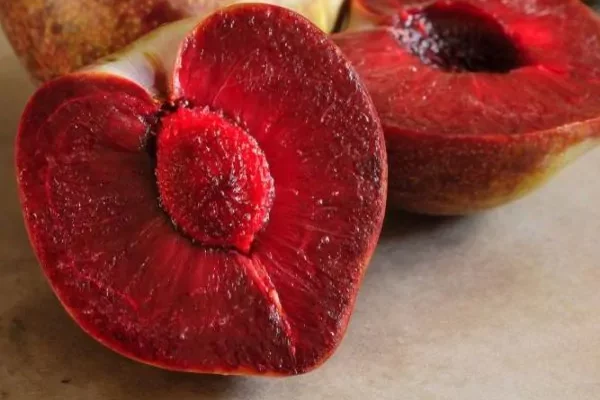Elephant Heart plums are a distinctive variety known for their large size, heart-shaped appearance, and sweet, juicy flesh. When selecting Elephant Heart plums, it’s essential to consider factors such as appearance, texture, ripeness, and freshness to ensure you’re getting the best quality fruit. Here’s a comprehensive buyer’s guide to help you choose the perfect Elephant Heart plums:
- Size and Shape: Elephant Heart plums are larger than many other plum varieties and are easily recognizable due to their heart-shaped appearance. Look for plums that have a uniform size and shape.
- Color and Appearance: Elephant Heart plums typically have a dark purplish-red to burgundy skin. The skin should be smooth and free from blemishes, cracks, or spots. Avoid plums with overly wrinkled or discolored skin, as these could indicate potential issues with quality or ripeness.
- Texture: Gently press the plum near the stem end. A ripe Elephant Heart plum should yield slightly to gentle pressure, indicating that it’s ready to eat. Avoid plums that are overly firm, as they might be underripe and lack the desired sweetness and juiciness.
- Ripeness: Ripe Elephant Heart plums should have a slightly soft texture and a deep, rich color. Check for plums that give a little when pressed near the stem end. This indicates that the fruit is at its peak ripeness.
- Aroma: While Elephant Heart plums might not have a strong aroma, if you detect a sweet, fruity scent at the stem end, it’s a good sign that the plum is ripe and ready to eat.
- Seasonality: Elephant Heart plums are typically in season during the summer months, usually from late spring to early fall, depending on your region.
- Local and Fresh Options: Whenever possible, choose locally grown Elephant Heart plums to ensure freshness and support local farmers. If you have access to farmer’s markets or specialty stores, you’re more likely to find the freshest and highest-quality plums.
- Bruising and Damage: Avoid plums with visible bruises, cuts, or soft spots, as these can indicate internal damage and affect the overall quality of the fruit.
- Stem and Skin: Plums with green stems are fresher. Avoid plums with dried, shriveled, or broken stems. Ensure the skin is smooth and unblemished, as this is an indicator of good quality.
- Storage and Ripening: If your Elephant Heart plums are slightly underripe, you can leave them at room temperature to ripen over a couple of days. Once they are ripe, store them in the refrigerator to extend their shelf life. Use a breathable container or a plastic bag with holes to prevent moisture buildup.
By considering these factors, you’ll be better equipped to select the best Elephant Heart plums for your enjoyment. Whether you eat them fresh, incorporate them into recipes, or savor their sweet, juicy flavor, Elephant Heart plums can be a delightful addition to your culinary experiences.
